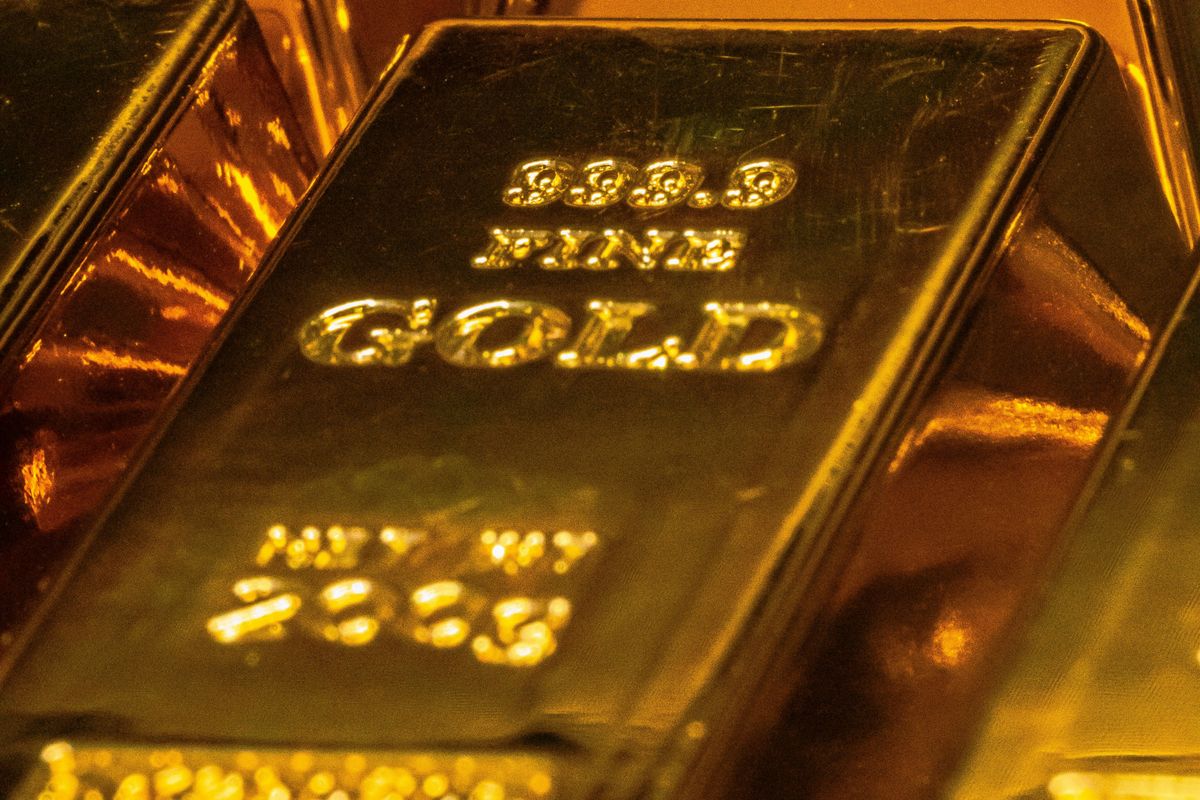3 Unusual Gold Uses — From Medicine to the Moon
Gold is best known as a safe-haven investment, but it has diverse technology applications too. Find out about uses for gold in the electronics, aerospace and medical industries.

Gold has long held the interest of investors looking for portfolio diversification, collectors on the hunt for rare pieces and fashionable people searching for accessories to complement their style.
But outside of its financial and retail applications, gold has important uses elsewhere.
According to the World Gold Council, of the 4,898.8 metric tons (MT) of gold produced in 2023, 12 percent, which works out to 297.8 MT, was consumed by the technology sector. Of that amount, 241.3 MT went toward electronics, while 47.1 MT was used in other industrial markets and 9.5 MT was allocated to dentistry.
The yellow metal has crucial roles to play in these segments even though they represent a relatively small portion of demand. Read on to learn about how gold is used in the electronics, aerospace and medical markets.
1. Electronics
Gold is used extensively throughout the electronics industry. It is a critical component in semiconductors, and because it doesn’t oxidize is useful for electrical contacts where corrosion could pose a problem.
Gold is also a highly malleable material, and is excellent for use on a miniature scale where precision is paramount.
This small scale is extending even further with the development of gold nanoparticle ink, which allows small amounts of gold to be used to print water-resistant circuits on a variety of surfaces. In addition to medicine and ink, nanoparticles have shown promise in improving conversion rates for photovoltaics by as much as 10 percent.
2. Aerospace
Gold is widely used in the aerospace industry. Perhaps most famously, it was used to plate the copper records aboard the Voyager 1 and 2 spacecraft. However, gold has many other aerospace uses as well.
The metal is used in the construction of visors for extra-vehicular suits worn by astronauts, as well as in the canopies of military aircraft. Gold is used because it has the ability to reflect ultraviolet radiation, which is encountered at elevated levels higher in the atmosphere and in space. These coatings help protect pilots and astronauts.
The films are applied through a process known as chemical vapor deposition, which uses a gold-containing precursor and a gas that results in a thin gold film being deposited on a substrate. An alternative process called magnetron sputtering can also be used; it involves using plasma to bombard the gold in a vacuum chamber and then condense it on the substrate. This second process is used in the manufacturing of semiconductors and electronics.
Because heat doesn’t dissipate well in a vacuum, gold’s reflective qualities make it valuable in reflecting solar radiation and preventing heat buildup for modules. This protects occupants and sensitive equipment from the extreme temperatures encountered by spacecraft. Gold is particularly good at reflecting the infrared band, and this is a key reason the metal was used in the construction of the mirror elements for the James Webb Space Telescope.
This same reasoning is why gold is used in the production of glass for buildings. Not only does it give the glass a golden luster, but it also reflects sunlight and reduces the buildup of heat within buildings.
3. Medicine
The oldest use for gold in medicine is dentistry, where it was first used an estimated 5,000 years ago.
As cultures moved from nomadic hunter-gatherer groups to agrarian-based societies, the human lifespan increased by a matter of decades. With this advancing age came deterioration in the tissues that held teeth in place. Gold wire was used to help keep teeth secure, with evidence of this practice being found in ancient Egypt, among pre-Columbian civilizations in the Americas and in the Etruscan civilization in what is now known as Italy.
Today, alloys of gold are used for dental crowns, fillings and cosmetic prosthetics like grills because they do not corrode, are resistant to acids and are of a similar hardness, preventing damage to surrounding teeth.
Elsewhere in medicine, gold salts were used in the 1800s in attempts to cure tuberculosis. These salts largely became popular because of the elite status that gold carried, but weren’t very effective at treating the disease. The drugs were further refined in 1925, when sodium-gold-thiosulfate was invented. It was claimed to neutralize tuberculosis and provide immunity, but the side effects were severe and its use was discontinued in the 1940s.
Despite their ineffectiveness in treating tuberculosis, gold salts did have some therapeutic effects, most notably their function as an anti-inflammatory agent. They were used to treat rheumatoid arthritis from the late 1920s through to the 1990s, when modern drugs with fewer side effects and greater efficacy replaced gold salts.
More recent advancements have seen gold nanoparticles being used in various ways throughout the medical sector. Their reflective quality makes them useful for microscopy to examine cellular structures, as well as in diagnostic imaging to identify cancer cells. Because gold nanoparticles have low toxicity, they are showing promise for the treatment of cancer, where they provide better binding for drugs to cancer cells.
Additionally, nanoparticles are being used in rapid diagnostic tests that can help identify the presence of malaria early on. These tests have proven to be reliable, with results being delivered within 15 minutes. Similar tests using gold nanoparticles have been developed to identify the presence of the COVID-19 virus.
Investor takeaway
For the near future at least, gold’s primary functions will continue to be on the investment side and in jewelry manufacturing, but that doesn’t mean the metal's industrial uses won't continue to expand.
Of course, one factor that's stymied gold's industrial growth is its price, which has hit record levels in 2024.
Could the situation change moving forward? In October 2023, NASA launched its Psyche spacecraft aboard Space X's Falcon Heavy rocket. The probe is bound for 16 Psyche, an asteroid completely made of metal with the potential to contain US$10 quintillion worth of gold. A gold discovery that large could unlock the precious metal's status in industrial applications — but accessing the asteroid and mining it would take decades, if not centuries.
In the meantime, gold’s position on Earth will remain secure.
Don't forget to follow us @INN_Resource for real-time updates!
Securities Disclosure: I, Dean Belder, hold no direct investment interest in any company mentioned in this article.
- 5 Basic Facts About Gold ›
- A Guide to Physical Gold as an Investment ›
- How to Use Gold Investments as a Hedge ›
- Why Do Central Banks Buy Gold? (Updated 2024) ›






